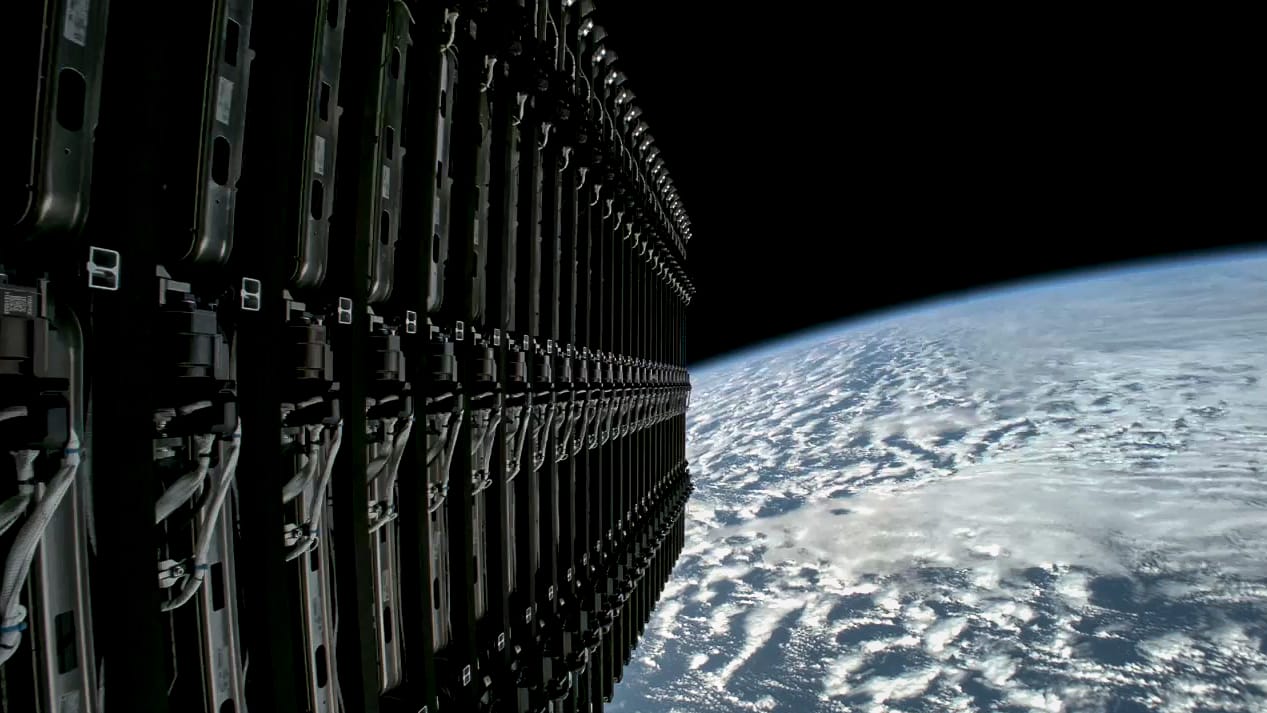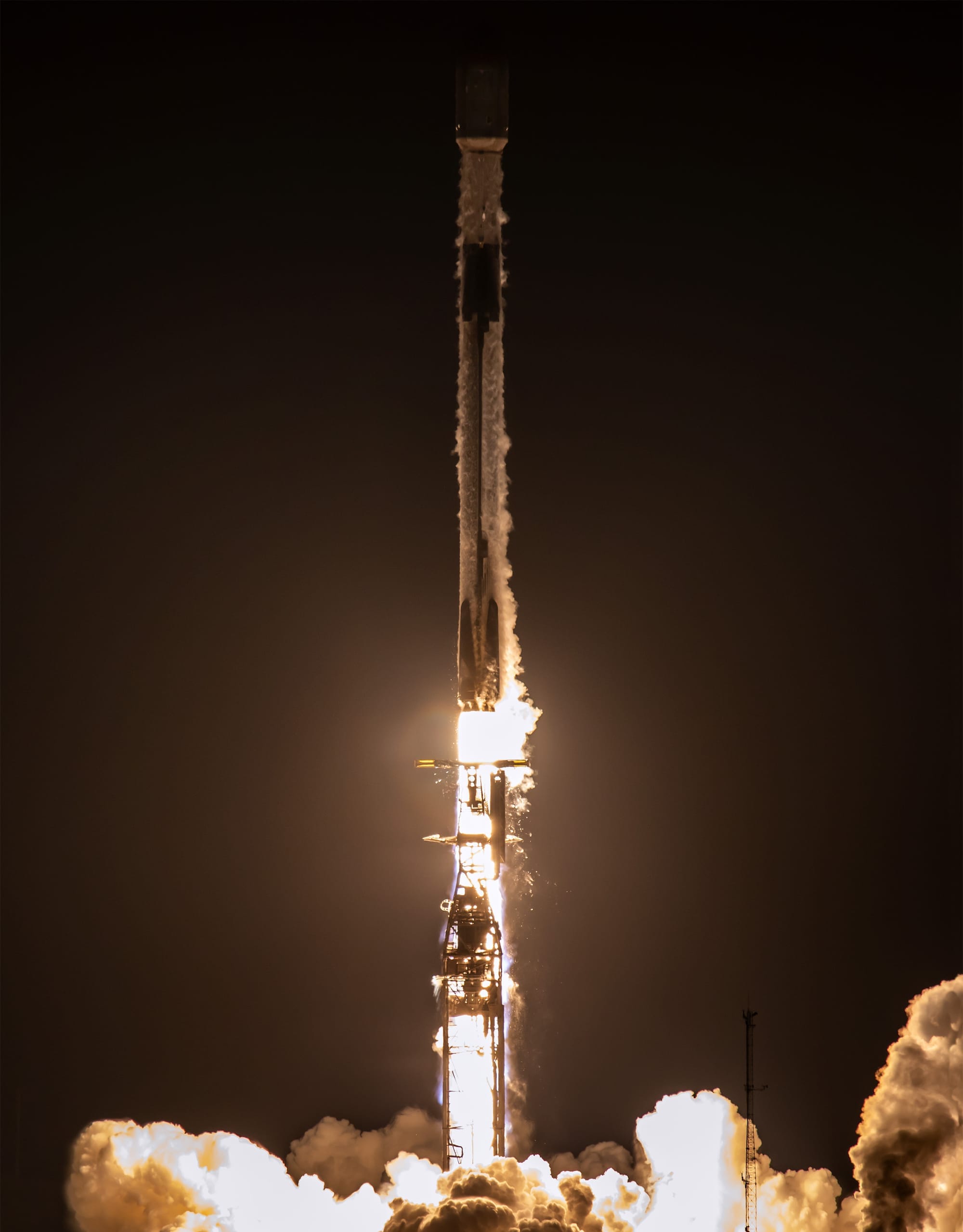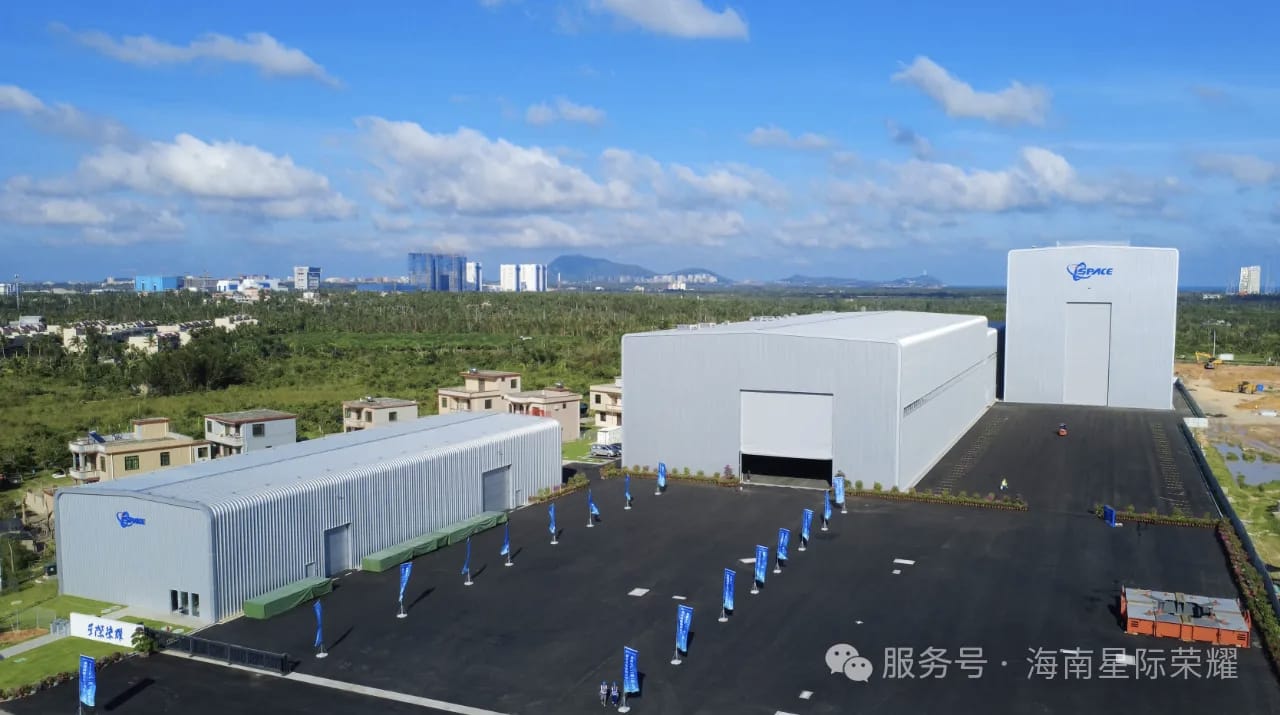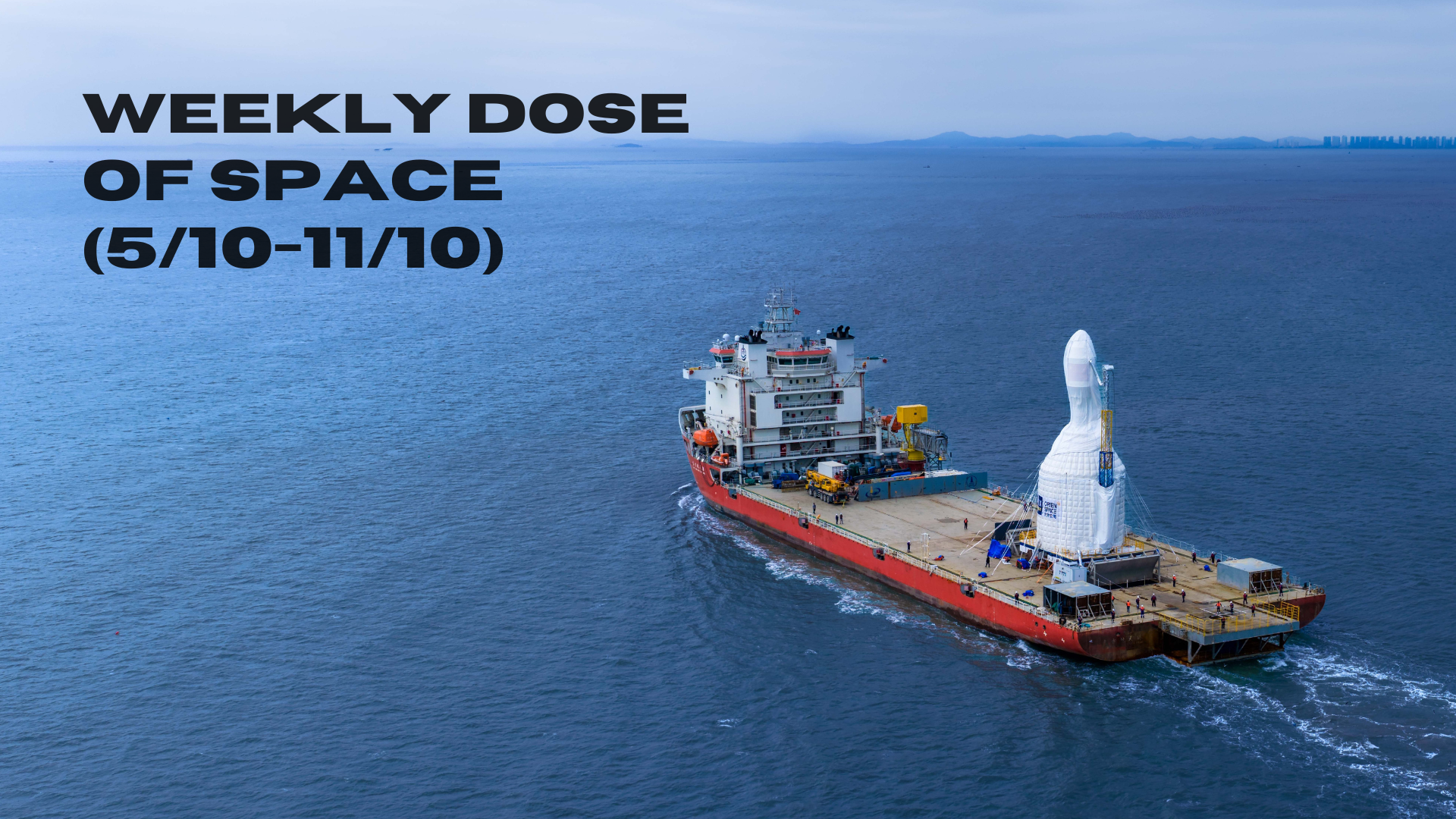Table of Contents
Welcome back to Weekly Dose of Space! This week had just four launches worldwide, including a rocket that hasn't flown in many months. News from the week had New Glenn moving toward its second flight, a private launch company in China stepping toward their debut reusable rocket flight, and Stoke Space raising new funding. As always, we'll also look ahead to what the worldwide launch schedule might look like next week.
Launches This Week
October 7th - Falcon 9 with Starlink Group 10-59
SpaceX's Falcon 9 delivered twenty-eight Starlink satellites to low Earth orbit from Space Launch Complex 40, in Florida. Booster B1090 supported this launch, flying for the eighth time and landing downrange on the drone ship 'A Shortfall Of Gravitas'.

October 8th - Falcon 9 with Starlink Group 11-17
Another twenty-eight Starlink satellites were launched atop of Falcon 9 into low Earth orbit out of Space Launch Complex 4E, in California. Supporting this mission was booster B1071 for its twenty-ninth flight, with a landing on the drone ship 'Of Course I Still Love You' downrange.

October 8th - New Shepard for NS-36
Blue Origin's New Shepard rocket flew a suborbital tourism mission from the company's West Texas launch site, carrying Aaron Newman, Jeff Elgin, Vitalii Ostrovsky, Danna Karagussova, William Lewis, and Clint Kelly (a repeat customer) above the Kármán line. Booster NS4 supported this flight, for its sixteenth mission, along with capsule RSS First Step, flying for the fifteenth time.
🔁 NS-36 Replay: Booster Touchdown! pic.twitter.com/Yugpdh5TVl
— Blue Origin (@blueorigin) October 8, 2025
New Shepard booster NS4 touching down at Blue Origin's West Texas facility, via Blue Origin on Twtiter.
October 11th - Gravity-1 with three satellites
Orienspace's Gravity-1 launch vehicle performed its second flight, after a twenty-one-month gap, from a sea-launch platform in the Yellow Sea near the city of Haiyang for a flight into sun-synchronous orbit. Atop of the rocket were the Shutianyu 01 and 02 space monitoring satellites, planned to image orbital debris, and the remote sensing Jiangsu Geological Satellite for measuring mineral resources as well as monitoring land usage.

In Other Space News
New Glenn prepares for second flight
Lots going on today, but thought you might want another shot of the booster on the move. pic.twitter.com/abdNooS8u2
— Dave Limp (@davill) October 8, 2025
New Glenn's first-stage being transported to its launch pad, via Dave Limp on Twitter.
Nine months ago, Blue Origin's New Glenn rocket flew its debut mission from Launch Complex 36, in Florida. Recently, the company has been moving toward flying the vehicle second mission, this time carrying NASA's ESCAPADE duo toward Mars.
Just over two weeks ago, the company's Chief Executive Officer, Dave Limp, revealed the name of New Glenn's second first-stage booster, calling it 'Never Tell Me The Odds'. He also shared:
"I think the odds of landing this booster are a lot better than 3,720-to-1. Both strakes are in place, and BE-4 installation is well underway. Great job by the team as we continue getting our second booster ready for launch."
On October 8th, 'Never Tell Me The Odds' was on the move toward the launch pad, equipped with its seven BE-4 engines with thermal protective fabric and panels installed. Several hours later, the booster arrived at Launch Complex 36 for connection to New Glenn's second-stage.
With New Glenn’s arrival at our Integration Facility, we’re starting the first and second stage mate. Here is a quick view. pic.twitter.com/BdwHFXfH3J
— Dave Limp (@davill) October 10, 2025
New Glenn first-stage booster 'Never Tell Me The Odds' and its second-stage undergoing launch preparations at Launch Complex 36, via Dave Limp on Twitter.
A few steps are left before New Glenn can fly for a second time, with major milestones being integration of the two ESCAPADE spacecraft and a static fire of the first-stage, firing up all seven of its engines for a few seconds.
In the lead-up to a second launch, Blue Origin was awarded 78.2 million United States Dollars from the United States Space Force to expand satellite processing facilities in Florida. That facility should be open by 2028 for use by multiple launch providers.
iSpace opens Hyperbola-3 refurbishment facility

iSpace shared on October 9th that its Hyperbola-3 launch vehicle processing and refurbishment facility, neighbouring the Wenchang Commercial Space Launch Site, has completed construction. The 28,800 square meter typhoon-resistant facility is claimed to be China’s first reusable rocket refurbishment plant, with its opening ceremony attended by Hainan province’s government and party committee, Wenchang’s government and party committee, and relevant officials from the region’s space administration.
At the ceremony, company Chairman Peng Xiaobo expressed his thanks for government support in the facilities construction and efforts to have it completed on time. He also added that the processing and refurbishment facility will be the foundation of iSpace’s reusable rocket operations.
In news related to the opening ceremony, it was announced that Hyperbola-3, iSpace’s two-stage partially reusable rocket, is planned to fly for the first time in the fourth quarter of the year. Hyperbola-3’s debut flight is expected to be prepared in the new facility, before heading to the nearby Commercial Launch Pad 2 for launch.
Stoke Space raises 510 million
Stoke Space announced on October 8th that they have completed their Series D funding round, raising 510 million United States Dollars. Investors in this round include the US Innovative Technology Fund, Washington Harbour Partners LP, General Innovation Capital Partners 776, Breakthrough Energy, Glade Brook Capital, Industrious Ventures, NFX, Sparta Group, Toyota Ventures, Woven Capital, and others.
With the new funding, the company plans to expand production capacity for the Nova launch vehicle, complete activation of Launch Complex 14, in Florida, and prepare for high-cadence launch operations. Stoke Space's Chief Executive Officer and Co-Founder, Andy Lapsa, added:
"This funding gives us the runway to complete development and demonstrate Nova through its first flights" – "We’ve designed Nova to address a real gap in launch capacity, and the National Security Space Launch award, along with our substantial manifest of contracted commercial launches, affirms that need. The fresh support from our investors and government partners enables our team to remain laser focused on bringing Nova’s unique capabilities to market."
One of the company's investors, the US Innovative Technology Fund, also noted:
"Stoke’s pioneering approach to reusable launch systems directly advances our national security and commercial access to orbit. Their vision for resilient, high-frequency launch operations is the kind of innovation essential to maintaining leadership in the space industry. We’re proud to support their mission in defining the next chapter of U.S. aerospace."
What to Expect Next Week
October 13th - Falcon 9 for KF-03
SpaceX is preparing to launch twenty-four Kuiper satellites into low Earth orbit from Space Launch Complex 40 to expand Amazon's internet constellation.
October 14th - Starship-Super Heavy for its eleventh flight test
SpaceX is planning to launch Starship-Super Heavy's eleventh flight test using Booster 15, for its second flight, and Ship 38, flying for the first time.
October 14th - Falcon 9 with Starlink Group 10-52
Twenty-eight Starlink satellites are planned to be launched atop of a Falcon 9 into low Earth orbit from Space Launch Complex 40.
October 14th - Electron for 'Owl New World'
Rocket Lab's Electron rocket is set to fly from Launch Complex 1A, on the Māhia Peninsula in New Zealand, carrying a single satellite into low Earth orbit for Synspective.
October 15th - Falcon 9 for a Tranche-1 mission
Falcon 9 is planned to launch from Space Launch Complex 4E carrying twenty-one satellites into low Earth orbit for the U.S. military.
October 16th - Long March 8A for a mega-constellation?
A Long March 8A is preparing to fly from the Wenchang Commercial Space Launch Site, and may carry either a group of satellites for the GuoWang or Qianfan into low Earth orbit.
October 17th - Falcon with Starlink Group 10-17
Another twenty-eight Starlink satellites are preparing to head into low Earth orbit via a Falcon 9 flying from Space Launch Complex 40.
October 18th - Falcon 9 with Starlink Group 11-19
Even more Starlink satellites will be sent to low Earth orbit atop of a Falcon 9 flying from Space Launch Complex 4E.







